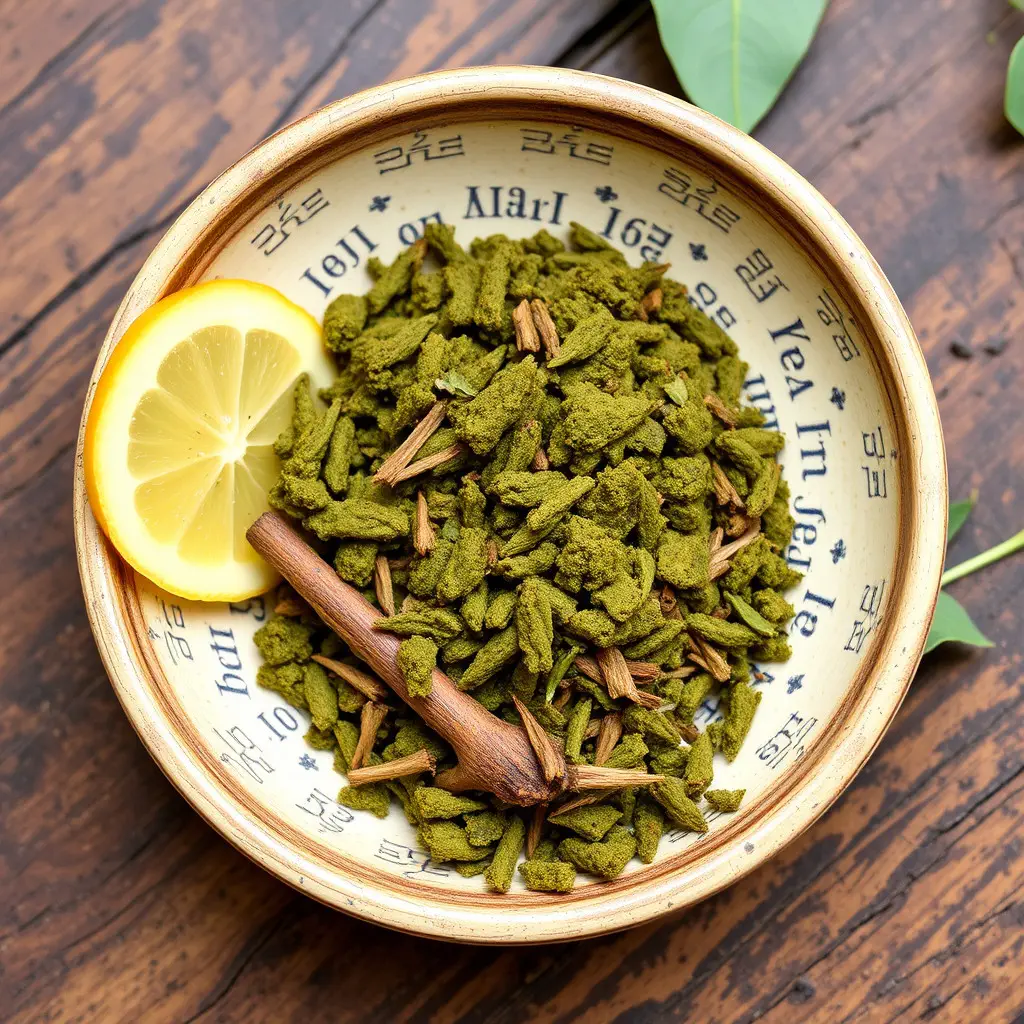Kratom, derived from Mitragyna speciosa leaves, has become a topic of interest among athletes for its potential performance-enhancing effects due to its alkaloids, such as 7-hydroxymitragynine and mitragynine. These compounds can influence opioid receptors, potentially reducing fatigue and managing pain, which may be advantageous for endurance sports. However, individual responses to kratom can vary significantly, necessitating careful use. Unlike traditional kava smoking accessories used in cultural rituals, kratom can be consumed in various forms, including capsules, powder, or tea. Its legal status is subject to jurisdiction-specific laws, making it imperative for athletes to understand its nuanced effects and potential side effects to adhere to athletic regulations responsibly. Additionally, kava smoking accessories have gained popularity among athletes as they are believed to enhance the effects of kratom when used in conjunction, potentially offering a synergistic benefit for performance without drowsiness. These accessories are designed to optimize the consumption experience by ensuring the effective release of active compounds and streamlining the smoking process. Athletes should approach the use of both substances with caution, mindful of the legal and ethical implications, and stay informed on the evolving regulations surrounding their use in sports.
Exploring the intersection of natural supplements and athletic prowess, this article delves into the role of kratom as a performance enhancer for athletes. Section one, “Unraveling the Impact of Kratom on Athletic Performance,” examines the scientific evidence behind kratom’s effects on endurance, strength, and recovery times. Moving forward, “Kava Smoking Accessories: Enhancing the Kratom Experience for Athletes” discusses how specific tools can optimize kratom intake for peak performance. Lastly, “Navigating the Legal and Ethical Considerations of Using Kratom in Sports” addresses the regulatory landscape surrounding this botanical substance, ensuring athletes are well-informed on its permissibility within different sports leagues. This comprehensive analysis aims to shed light on kratom’s potential as a supplement for athletic performance while considering all relevant factors.
- Unraveling the Impact of Kratom on Athletic Performance
- Kava Smoking Accessories: Enhancing the Kratom Experience for Athletes
- Navigating the Legal and Ethical Considerations of Using Kratom in Sports
Unraveling the Impact of Kratom on Athletic Performance

Kratom, a mitragynoid derived from the leaves of Mitragyna speciosa, has garnered attention within athletic communities for its potential performance-enhancing properties. While the scientific community continues to explore its effects, anecdotal evidence suggests that kratom may offer benefits to athletes seeking improved endurance and stamina. Alkaloids found in kratom, such as 7-hydroxymitragynine and mitragynine, are believed to interact with opioid receptors in the brain, potentially modulating pain perception and reducing fatigue, which can be advantageous for endurance-demanding activities. However, it is crucial for athletes to approach the use of kratom with caution, as its effects can vary significantly from person to person, and its legal status varies by region. Unlike kava smoking accessories, which are designed for a specific ritualistic use, kratom’s consumption methods are diverse, ranging from capsules to powder and teas, offering a degree of flexibility in how it is ingested. Athletes considering incorporating kratom into their regimen should be well-informed about the substance’s nuanced effects, potential side effects, and the legal implications associated with its use. Proper dosing and monitoring are essential to avoid adverse outcomes and to ensure that any performance enhancements align with ethical sporting standards.
Kava Smoking Accessories: Enhancing the Kratom Experience for Athletes

Kava smoking accessories have gained traction among athletes seeking to enhance their experience with kratom, a natural supplement known for its potential performance-boosting qualities. These accessories are specifically designed to facilitate the proper preparation and consumption of kava, which is often used in conjunction with kratom to amplify its effects. The ritual of smoking kava, when paired with high-quality kratom, can provide a synergistic effect that may improve focus, endurance, and overall energy levels. Athletes report that this combination can lead to a more profound sense of well-being and relaxation without the sedative effects typically associated with these substances.
The use of specialized kava smoking accessories ensures that the active compounds found in both kava and kratom are released efficiently, providing a smoother and potentially more effective experience for athletes. These accessories often include items like natural bowls and pipes tailored to produce optimal temperatures for vaporizing the kava without compromising its potency. Additionally, the right accessory can make the process of smoking kava less cumbersome and more accessible, especially for individuals who are new to this method of consumption. By carefully selecting the appropriate kava smoking accessories, athletes can optimize their intake of these natural substances, potentially leading to improved athletic performance and a more fulfilling experience.
Navigating the Legal and Ethical Considerations of Using Kratom in Sports

The integration of kratom, a natural supplement derived from the leaves of Mitragyna speciosa, into athletic performance regimens has sparked significant debate within the sports community, particularly concerning its legal and ethical implications. Kratom’s alkaloids, mitragynine and 7-hydroxymitragynine, are known to exert stimulant or sedative effects, depending on the dosage, which can potentially influence an athlete’s performance and recovery processes. From a legal standpoint, the status of kratom varies across different countries and states, with some banning it entirely while others regulate its use. Athletes must navigate these complex regulations to avoid inadvertent violations of anti-doping policies. Additionally, the ethical considerations surrounding kratom’s use are multifaceted. Proponents argue that kratom offers a natural alternative to synthetic performance enhancers, potentially benefiting athletes who seek holistic methods for improvement. However, critics caution against its unregulated use, highlighting the need for further research into its long-term effects on health and fair play. In this context, it is crucial for athletes to be well-informed about the legal landscape and to approach kratom with caution, possibly considering alternative methods or products like kava smoking accessories, which are also naturally derived and may offer some therapeutic benefits without the performance-enhancing risks associated with kratom. As the regulatory environment evolves, athletes, coaches, and governing bodies must remain vigilant to ensure compliance with sporting regulations and maintain the integrity of competition.
In conclusion, the exploration into how kratom influences athletic performance reveals a promising potential for this botanical supplement to enhance endurance and alleviate pain, which can be particularly advantageous for athletes. The use of kava smoking accessories as a means to administer kratom has gained attention among those in the sports arena, offering a culturally nuanced approach that aligns with traditional practices while providing a potent and efficient method for consumption. However, it is imperative for athletes and coaches to be cognizant of the legal and ethical frameworks surrounding kratom use within their respective sports. As such, a prudent approach to integrating kratom into athletic training programs, with careful consideration of its regulatory status and potential effects on health and competition fairness, is essential. Prospective studies and further research are warranted to elucidate the full spectrum of kratom’s impact on athletic performance, ensuring safe and responsible use within the sports community.






